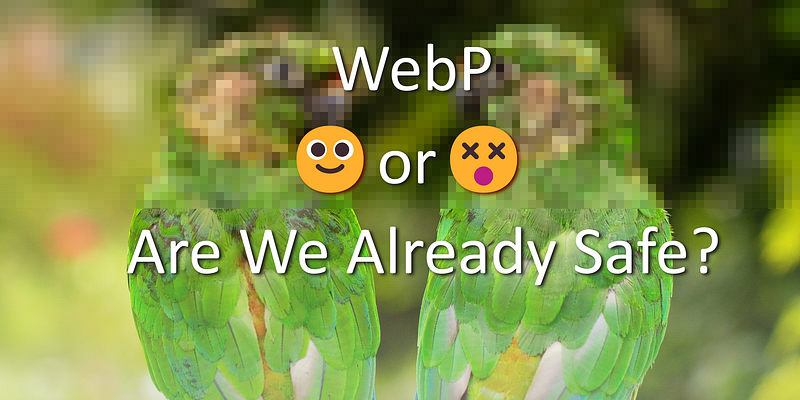Are We Truly Safe from the WebP Vulnerability?
Written on
Chapter 1: Understanding the WebP Vulnerability
Recent reports indicate that the concerns regarding a zero-day vulnerability in Google's WebP format are indeed valid. According to the vulnerability assessment, it carries an alarming base score of 8.8. This severity suggests that simply viewing an image could lead to significant issues.
This paragraph will result in an indented block of text, typically used for quoting other text.
Section 1.1: The Implications of the Vulnerability
The seriousness of this vulnerability cannot be overstated, as malicious actors have already begun to exploit it. The flaw, identified as a heap buffer overflow in WebP for Google Chrome versions prior to 116.0.5845.187, allows attackers to execute out-of-bounds memory writes via specially crafted HTML pages (Chromium security severity: Critical).
The vulnerability has been traced back to libwebp, an open-source WebP codec that sees widespread use. This means that any software capable of displaying images and utilizing WebP (thus, leveraging libwebp) is at risk. For instance, if you open an email containing a WebP image, and your email client renders that image, it could allow a hacker to run code on your device.
Subsection 1.1.1: Current Software Responses

Fortunately, several major browsers and applications have issued patches. Google Chrome, Microsoft Edge, Mozilla Firefox, Thunderbird, Safari, and LibreOffice have all addressed this vulnerability. To verify whether the applications you use are secure, search for their name alongside the report code: CVE-2023–4863.
Section 1.2: The Challenge of Software Updates
Unfortunately, it can be challenging to ascertain the security status of all software, particularly since many applications are not actively maintained. Nevertheless, ensuring that your software is updated is a critical step in enhancing security.
Chapter 2: The Nature of the WebP Format
As a relatively new format backed by a patent, WebP has several vulnerabilities. Considering its aggressive promotion by Google, it has seen an uneven rate of adoption, making it an attractive target for cybercriminals. In contrast, formats like JPEG, GIF, and PNG have undergone extensive development and security measures over the years, making vulnerabilities in those formats significantly harder to exploit.
For further insights, check out the following videos:
The first video titled "Why You Need To Patch More Than Your Browser For WebP Vulnerabilities Now!" discusses the urgency of updating your software to mitigate risks associated with the WebP vulnerability.
The second video, "Finding The .webp Vulnerability in 8s (Fuzzing with AFL++) - YouTube," demonstrates practical methods of identifying WebP vulnerabilities quickly.
Be sure to engage with our content for more articles related to coding and technology!